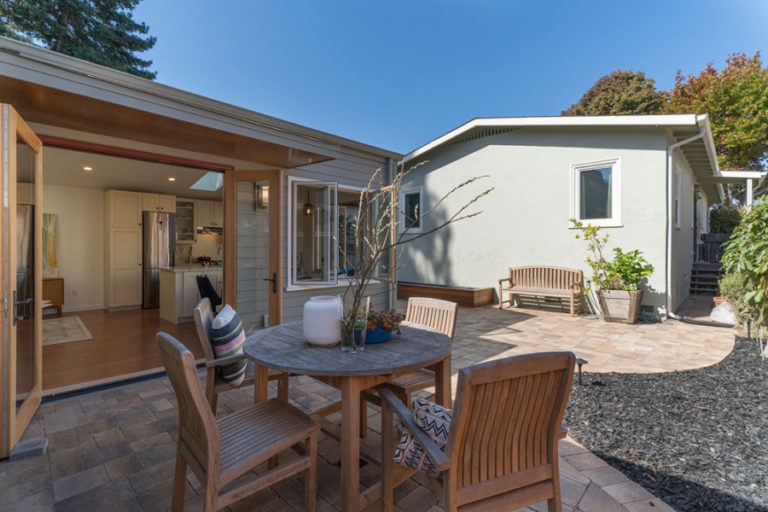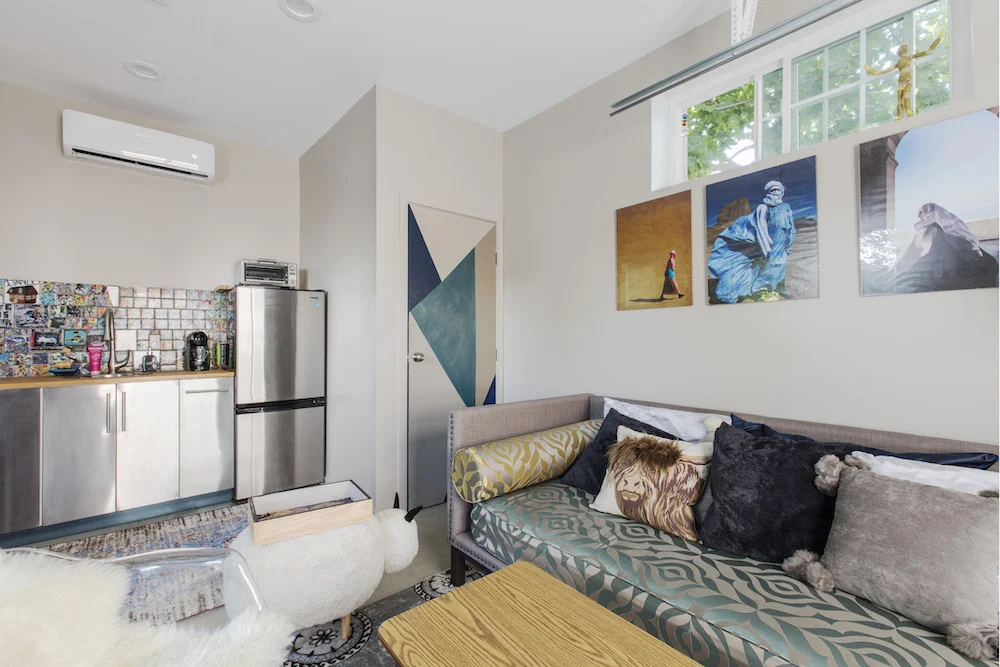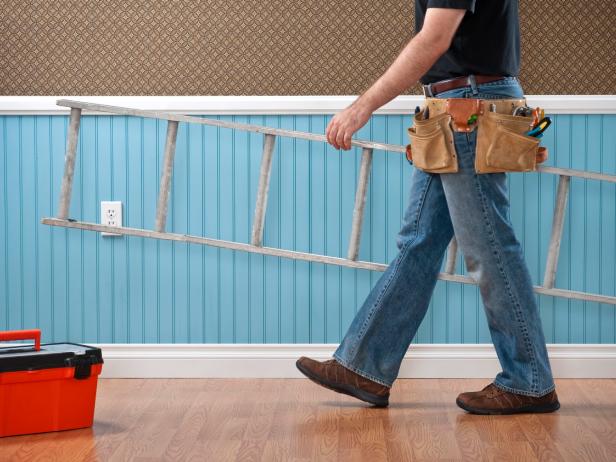When it comes to plumbing requirements for accessory dwelling units (ADUs) and junior accessory dwelling units (JADUs), there are some key differences to keep in mind. ADUs and JADUs are both popular options for adding extra living space to a property, but they have distinct plumbing needs. In this discussion, Concept Design & Develop INC will take a closer look at these differences in a conversational tone. From water and sewer connections to fixture requirements, understanding these variations is crucial for anyone considering building or renovating these types of living spaces. So, let’s dive into the world of ADU and JADU plumbing and explore what sets them apart.
Size and Space:
When it comes to the size and space considerations for ADUs (Accessory Dwelling Units) and JADUs (Junior Accessory Dwelling Units), it’s all about the room you have to work with. ADUs are like the independent siblings of the housing world. They usually have more room to stretch their legs, so to speak. Think of them as the older brother who’s moved out and has their own kitchen, bathroom, and living area, making them self-sufficient living spaces. On the other hand, JADUs are more like the younger siblings who share the family home. They’re compact and often created within an existing house, utilizing space efficiently. So, when it comes to plumbing requirements, ADUs typically have larger plumbing systems to accommodate their standalone nature, while JADUs work with a more limited footprint.
Fixture Requirements:
Fixture requirements for ADUs (Accessory Dwelling Units) and JADUs (Junior Accessory Dwelling Units) are essential considerations when planning these living spaces. ADUs, think of them as the full-service apartments in your housing options menu. They come equipped with all the fixtures you’d find in a regular home: a kitchen sink, bathroom sink, toilet, and a shower or bathtub. They’re like independent little homes, complete with everything you need for daily living. Ensuring that these fixtures are of high quality and properly maintained is crucial, and you may want to consult a plumbing service page for guidance on fixture selection and maintenance. Onto JADUs – they’re like the cozy nooks within a larger home. When it comes to fixtures, JADUs often share some of them with the main house. For example, the main kitchen sink and bathroom facilities might be shared. This sharing arrangement can save space and plumbing work, but it also means that everyone in the house needs to coordinate their use of these fixtures. Proper plumbing services can help design efficient plumbing systems that accommodate shared fixtures in JADUs, ensuring that water usage is optimized and plumbing fixtures are in good working order.

Water and Sewer Connections:
Water and sewer connections for ADUs (Accessory Dwelling Units) and JADUs (Junior Accessory Dwelling Units) vary in their approach. ADUs, much like their independent spirit, usually require separate water and sewer connections, essentially giving them their own pipelines to the world. This can mean additional installation work and costs, not to mention navigating local permits and regulations for these new connections. Now, JADUs take a more “family-first” approach by often piggybacking on the existing water and sewer connections of the main house, akin to having a little sibling sharing your toys. This setup can simplify things considerably, as you don’t need to dig new trenches or install separate lines. However, it’s crucial to choose the right plumbing fixtures to ensure efficient use of shared resources and maintain harmony within the household.
Permitting and Regulations:
Permitting and regulations for ADUs (Accessory Dwelling Units) and JADUs (Junior Accessory Dwelling Units). ADUs, being the more independent siblings, usually come with a bit more paperwork and red tape. Local authorities often have stricter regulations and permitting processes in place for these standalone units. It’s kind of like going through the hoops to get a separate driver’s license. On the flip side, JADUs tend to enjoy a more relaxed regulatory environment. They’re often considered an extension of the main house, which means fewer hoops to jump through when it comes to permits. It’s like having a family member move into your house – it’s less complicated legally.
Utility Meters:
Utility meters in the world of ADUs (Accessory Dwelling Units) and JADUs (Junior Accessory Dwelling Units) play a crucial role. ADUs, being the independent souls they are, often come with their own utility meters, akin to having a separate bank account for each dwelling on your property. This means you’ll be keeping tabs on their water and electricity consumption separately, which can be useful for tenants or homeowners who want to track expenses precisely. Additionally, ensuring proper plumbing in ADUs becomes even more important because efficient plumbing can significantly impact water usage and, by extension, utility bills. When it comes to JADUs, they often share utility meters with the main house, creating a joint bank account with your family, so to speak. This setup can simplify billing and management because you don’t have to divide the costs between units. However, it also means everyone’s usage affects the same bill, emphasizing the importance of proper plumbing practices to ensure that water is used efficiently and without waste. Proper plumbing maintenance and fixtures in both ADUs and JADUs can lead to cost savings and a more sustainable living environment for all residents on the property.

Accessibility:
ADUs (Accessory Dwelling Units):
- Often subject to more stringent accessibility requirements, especially if intended for long-term rentals.
- May need to adhere to ADA (Americans with Disabilities Act) standards, which include features like wider doorways, accessible ramps, and grab bars in bathrooms.
- Need to consider factors like step-free entrances and accessible bathroom and kitchen layouts to accommodate individuals with mobility challenges.
- Typically require careful planning and may involve additional construction costs to meet accessibility standards.
- Suitable for independent living arrangements, including accommodating tenants with disabilities who need accessible spaces.
JADUs (Junior Accessory Dwelling Units):
- Tend to have fewer accessibility requirements, as they are often considered an extension of the main dwelling.
- May not be subject to the same ADA standards as ADUs, making them a more flexible option for homeowners.
- Still, it’s advisable to think about accessibility if occupants in the main house have specific needs, as JADUs share some facilities.
- Often more adaptable and can cater to different living situations within the primary residence.
- May not require significant accessibility modifications, but homeowners should consider individual circumstances when designing or converting JADUs.
Cost Considerations:
Dollars and cents when it comes to cost considerations for ADUs (Accessory Dwelling Units) and JADUs (Junior Accessory Dwelling Units). ADUs can be like building a separate mini-house, which means they often come with higher plumbing installation and maintenance costs. You’ve got to think about setting up a full plumbing system, which includes water and sewer connections, fixtures, and sometimes even separate utility meters. It’s like giving birth to a new household. On the flip side, JADUs are like the economical option within the family. They can be more cost-effective because they share plumbing infrastructure with the main house. You’re essentially expanding your existing plumbing system to accommodate the JADU, which can save you some plumbing installation expenses. It’s like welcoming a new family member without needing to build an entirely new house.

FAQ’s:
What are the methods of ADU?
The methods of ADU (Accessory Dwelling Unit) construction include conversion of existing space, detached structures, or garage conversions.
How close to my house can I build an ADU?
ADU setback regulations vary by location but typically require a minimum distance of 5 to 10 feet from the main house and property lines.
What are the different terms for ADU?
ADUs are also known as granny flats, in-law units, secondary suites, backyard cottages, or guest houses.
What are the benefits of Jadu?
The benefits of a JADU (Junior Accessory Dwelling Unit) include cost-effective expansion of living space within an existing home and potentially increased property value.
What is the opposite of ADU?
The opposite of ADU (Accessory Dwelling Unit) in terms of housing would be a single-family home, as ADUs are often secondary units on the same property.
CONCLUSION:
In conclusion, understanding the key differences between ADU (Accessory Dwelling Unit) and JADU (Junior Accessory Dwelling Unit) plumbing requirements is essential for anyone considering building or renovating these living spaces. ADUs typically demand larger, independent plumbing systems with separate water and sewer connections, making them suitable for self-sufficient living. On the other hand, JADUs often share plumbing fixtures and utility meters with the main house, simplifying installation and costs but requiring careful coordination with household occupants. Ultimately, the choice between ADU and JADU plumbing depends on your property’s size, budget, and your desired level of independence for the additional living space.



